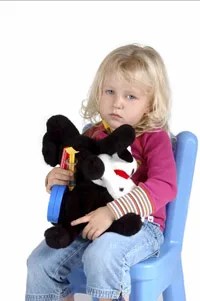Many children have emotional and behavioral problems that parents might interpret as signs of depression. For most children, however, these behaviors are short-lived and not cause for long-term concern.

Often parents worry when their child feels “blue” because they have heard or read that this is an early sign of a serious mental illness known as depression. Confusion often arises over the use of the term “depression”, so it is important to talk with your child about the events that may be affecting them. Many people use the term when they feel sad, which everyone — child, adolescent and adult — feels from time to time. If, however, the sadness is persistent, your child’s behavior changes, or you can’t find a reason for the blue mood, then you should seek advice from a school psychologist, your pediatrician or family physician, or a child/adolescent mental health clinic.
It is important to remember that parents should never ignore their own worries about their children. They should seek reliable advice until they are reassured that there is either nothing to worry about or that proper treatment for a diagnosable condition has been initiated. Parents should not try to make any specific diagnosis themselves.
The common symptoms of clinical depression in children include persistent sadness; irritability; an inability to enjoy previously favorite activities; complaints of physical illness, such as headaches and stomachaches; boredom; low energy; poor concentration; and a change in eating or sleeping patterns. Children can show any of these symptoms without it necessarily meaning that he or she is clinically depressed. However, if several of these symptoms persist, it becomes more likely that the child is suffering from or vulnerable to developing either significant depression or some other condition that may require medical intervention.
A number of risk factors can predispose children to depression or trigger depressive behavior. Among them are a family history of mental illness or suicide; emotional, sexual or physical abuse; chronic illness; and the loss of a parent to death, divorce or abandonment.
Depression is among the more commonly diagnosed major mental disorders in adolescents and adults. According to the American Association of Child and Adolescent Psychiatry, depression also exists in about two percent of grade school children, or about one million kids, in the general U.S. population. About five percent of children and adolescents in the general population suffer from depression at any given point in time.
Although depression is one of the most common emotional problems, it is also one of the most treatable conditions. Psychotherapy, medication and family counseling can help to treat depressed children. Psychotherapy is used to help children recognize and change negative thinking patterns; antidepressant medications alter the action of the brain to improve mood, sleep, appetite, energy levels and concentration; and family counseling helps family members retain patience and cooperation during the disruptive time when one family member is seriously ill.
If a parent is worried about their child’s emotional health, it is important to talk to someone about the child’s emotional and behavioral state. This will help children with significant depression get the help they need so they can return to enjoying the excitement of childhood.





















